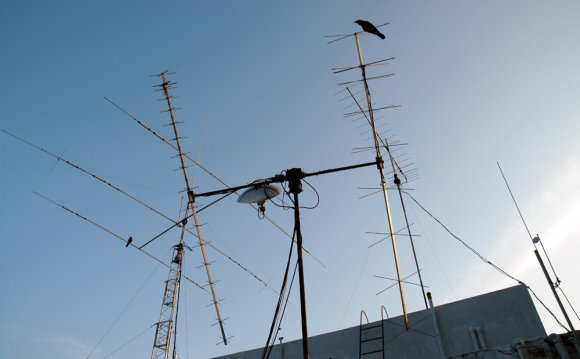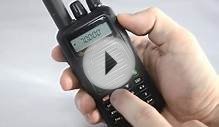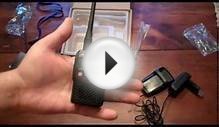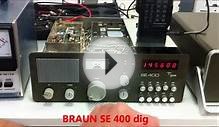
(Note that increasing height will mean the adding of additional losses involved with adding longer coax so the numbers below will not be exact in real life.)Examples:
"Antenna height is above ground (flat terrain)." Using station "A" and station "B"
1. Antenna height for each station: 6 feet. Line of sight to horizon for each station's line of sight = 3 miles
Both stations A and B line of sight between each other = 6 miles. So within 6 miles of each other, communications should be possible.
2. Antenna height increased to 12 feet by each station A and B = 5 miles for each station
Total line of sight =10 miles between the two stations. So within 10 miles of each other, communications should be possible.
3. Both stations increase their height to 50 feet = 10 mile line of sight for each station
Total line of sight between stations = 20 miles. If the stations are within 20 miles of each other, communications should be possible.
Now using the same calculation with no changes in either station other then height of one station:
4. Station A remains at 6 feet.
Station B uses 50 feet.total range between stations = 13 miles. So if each station is within 13 miles from the other...you guessed it, they should be able to communicate.
5. Now for a repeater and an HT at 6 feet example, (hand held radio) with a repeater at 1000 feet on the other end:
HT line of sight to the horizon = 3 miles
Repeater line of sight to horizon = 48 miles!
So you can see by this last example above that you stand a much better chance of getting into a repeater that has a very tall antenna or is on a tall building or mountain, hill, etc!
In the example, the repeater can "see" much farther than you can and "sees" not only your station but well beyond you! Now substitute the repeater height for an HT on top of a 1000 foot mountain.same line of sight!
One more EXTREME example that is out of this world.
Assume an HT in the International Space Station (ISS) next to a window facing the Earth with no obstructions!
It's line of sight at 200 miles (1, 056, 000 feet) above the Earth would be about 1, 456 MILES!
Now how's that for a line of sight distance using simplex??
Antenna types, power levels and other info for working simplex:
If you are really excited by now to "work" simplex, then here are some good suggestions that may help you get the most out of your station.
1. Use very low loss coaxial feed line.the lowest loss per foot you can afford. This will get the maximum amount of power from your radio to your antenna. At these higher frequencies, coaxial cable attenuates rf more rapidly and drastically than lower HF frequencies. An example using RG-58 type coax on 10Mhz vs 400Mhz increases loss by about 10db per hundred feet!
2. Use a high gain outside antenna if at all possible. The "rubber duck" antenna on your HT as if comes from the factory actually is a poor excuse to tack the word "antenna" on! Use a minimum of a 3 element Yagi or try a Slim Jim style antenna. Most Yagi's and verticals can be
INTERESTING VIDEO












